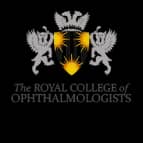Keratoconus treatment London
Keratoconus treatment with London's leading cornea specialists


Cross-linking is an early surgical intervention which decreases the chance of needing invasive corneal surgeries in the future to prevent the eye from being at risk of blindness.
Keratoconus Glasses and Contact Lenses are used to help you see once your keratoconus has affected your vision. However, keratoconus glasses and contact lenses do not prevent the condition of keratoconus from getting worse.
This is why cross-linking is used as an early surgical intervention to treat the condition before it progresses any further.
Cross-linking is a minimally invasive surgery which means your eye health is better protected against other future corneal procedures which require larger incisions.
Invasive surgeries can cause more complications with a longer recovery period whereas a minimally invasive surgery is easier and safer with a shorter recovery period.
Your natural vision will be better protected. Keratoconus is a condition that worsens overtime and can cause a risk of blindness in the future.
You may achieve a visual improvement in your sight, although visual improvements are not the success of corneal cross-linking surgery.




Have a question? We are here to help.
If you suffer from Keratoconus it means there is a lack of collagen in your cornea which causes your eye to abnormally change into the shape of a cone. Keratoconus is a progressive eye condition and overtime can cause extreme blurry vision (astigmatism), sensitivity to light and can, in some very progressive cases, lead to blindness.
When you visit your local opticians you will be told of your keratoconus condition if it is identified. Keratoconus can cause:
There is not a definite cause of keratoconus but a combination of genetic and environmental factors may develop the condition. It is reported that 10-20% of people who have Keratoconus also have a parent with the same condition yet in other cases, Keratoconus can develop from chronic eye-rubbing, Long screen time, Eye strain or inflammation of the eye.
Whether your keratoconus is mild or severely progressing, you will need to see our Cornea specialist who can advise if our treatment is the best option for you. We only provide a surgical procedure called cross-linking and the suitability for this surgery depends on the condition of your keratoconus and if you may require cross-linking to stabilize the eyes.
Our cornea specialist may consider corneal cross-linking as the most suitable treatment to treat your keratoconus. Corneal cross-linking is where we use special eye drops and ultraviolet A (UVA) light to help the damaged tissue in your cornea grow stronger. This process stops the bulge of the eye getting any worse as it adds special bonds that work like support beams to help the cornea become stable overtime.
Cross-linking is a minimally invasive treatment which means our specialist performs very minimal incisions to the eyes. A minimally invasive surgery is always recommended to prevent any further progression of your keratoconus condition and the likelihood of an invasive surgical procedure. For example, a corneal transplantation which requires removing the cornea completely.
If you have keratoconus on two eyes, we would be able to treat both with our cross-linking procedure in two separate surgeries.
We advise a 1 week recovery period after having your cross-linking surgery with us. Our corneal surgeon and nurse will also provide comprehensive aftercare instructions after your cross-linking procedure.
In very extreme cases Keratoconus can lead to permanent vision loss. Because Keratoconus is a progressive eye condition, not treating it could cause significant visual impairment in the future. If you have a very thin cornea, it is always best to get checked by our clinic to understand your treatment options. If you do not already use glasses or contact lenses to improve the condition of your keratoconus, our corneal specialist can offer cross-linking to slow or stop your cornea from abnormally growing and affecting your vision.
Glasses or contact lenses are used for people to correct the visual symptoms that occur from their Keratoconus condition whereas cross-linking is an early surgical intervention to help stop your Keratoconus from progressing even further. This surgery will not resolve blurry vision from keratoconus but will stop the blurring from getting worse in the future.